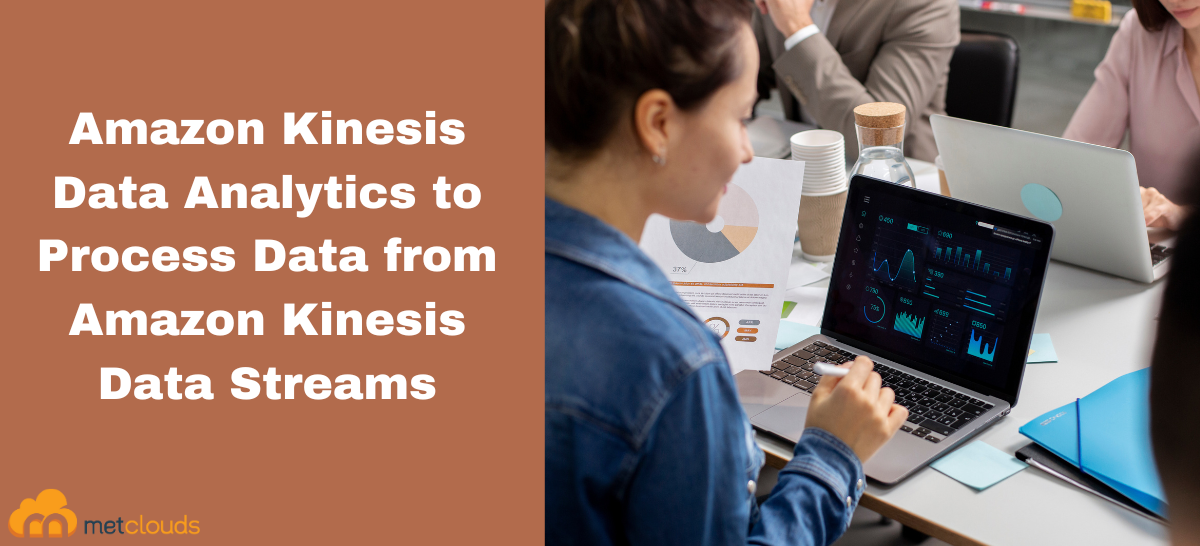Amazon Kinesis Data Streams is a real-time data streaming service that Amazon Web Services (AWS) provides. It allows you to ingest and process large volumes of streaming data in real-time, making it suitable for data analytics, monitoring, and real-time decision-making applications. Amazon Kinesis Data Analytics is a fully managed serverless real-time data analytics service offered by AWS. It is designed to help you process and analyze streaming data in real time without the need to manage infrastructure or worry about scalability. Kinesis Data Analytics lets you quickly derive insights from your streaming data and build real-time applications.
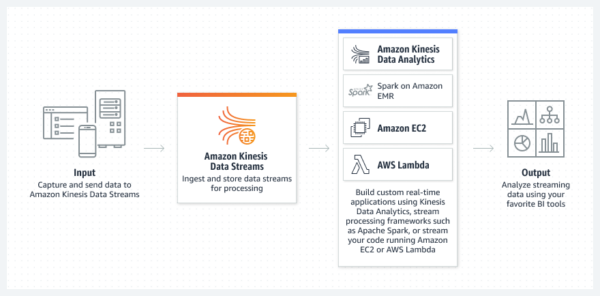
Here are some key features and concepts associated with Amazon Kinesis Data Analytics:
- Streaming Data Processing: Kinesis Data Analytics can process data from streaming sources, such as Amazon Kinesis Data Streams, Amazon Kinesis Data Firehose, or other streaming platforms.
- SQL-Based Analytics: It provides a SQL-like language for querying and analyzing streaming data in real-time. You can use familiar SQL syntax to filter, aggregate, and transform data as it flows through the system.
- Real-Time Results: Kinesis Data Analytics processes data as it arrives, allowing you to get real-time insights and take immediate actions based on the analyzed data.
- Windowing and Time-Based Processing: You can define time windows for aggregating and analyzing data, which is especially useful for calculating metrics over time intervals.
- Built-In Functions: Kinesis Data Analytics supports various built-in functions for data manipulation, including windowing functions, aggregation functions, and mathematical functions.
- Machine Learning Integration: You can integrate machine learning models into your real-time data processing pipelines using AWS SageMaker and other AWS services.
- Integration with AWS Services: Kinesis Data Analytics seamlessly integrates with other AWS services, such as Amazon S3, Amazon Redshift, Amazon Elasticsearch, AWS Lambda, and more, storing, visualizing, and acting on the analyzed data.
- Managed Infrastructure: AWS handles all the underlying infrastructure, including server provisioning, scaling, and maintenance, allowing you to focus on building and deploying your analytics applications.
- Error Handling and Logging: Kinesis Data Analytics provides error handling mechanisms and logging for debugging and monitoring your applications.
- Scalability: The service automatically scales to handle varying data volumes, ensuring that your applications can adapt to changes in workload.
Process data from Amazon Kinesis data streams using Amazon Kinesis data analytics
Amazon Kinesis data analytics helps to read data from Amazon Kinesis data streams, perform some transformation upon this data, and output the result to another Kinesis data stream. Also, you can run real-time queries on the transformed data from a studio notebook.
Provisioning Amazon Kinesis data stream
Step 1. Go to the Dashboard of Amazon Kinesis.
Step 2. Click the Create data stream button under Data stream.
Step 3. Give a name for the data stream. For automatic scaling select On-demand mode, and click the Create data stream button.
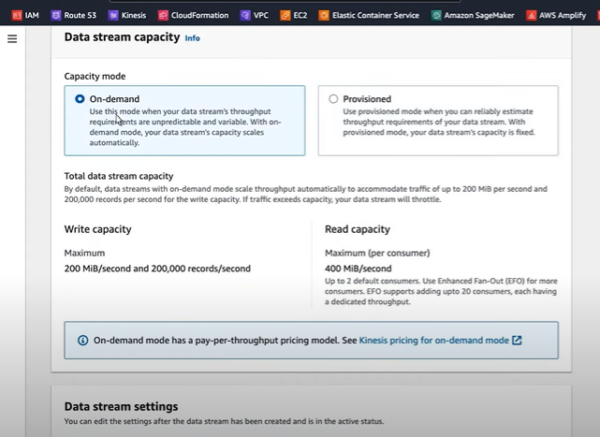
Step 4. Switch to the Python environment to explore how to produce data into the data stream.
Kinesis data stream can capture data from many sources, including application and service logs, clickstream data, sensor data, and in-app user events.
We will generate data by running an Apache Flink Table API locally. And define the table as the destination sink. Also, specify a table schema for sales orders that will be generated, a Kinesis connector, the name of the input stream, the AWS region, and the output format.
Step 5. Run the program.
Step 6. Return to Amazon Kinesis to view the input data stream.
Step 7. Click on the data stream, then click the Data Viewer tab.
Step 8. Select one of the shards and get its records.
Step 9. Return to the Python environment. There is another Apache Flink application.
In this case, the application reads the data from the output stream, transforms it by performing some aggregations, and then writes the transformed data to the destination stream. The destination sink schema is formatted for aggregated data. Tumbling window aggregates the total count and sum amount of each product in the various orders that get in 10-second intervals. The transformed aggregated data is written to the destination data stream.
Step 10. Return to the Amazon Kinesis dashboard and click Create Application under Data Analytics.
Step 11. Provide the necessary details and click the Create streaming application button.
Step 12. Go to Amazon Kinesis data analytics studio. Click on Create Studio Notebook. This notebook will allow us to interact with the streaming data.
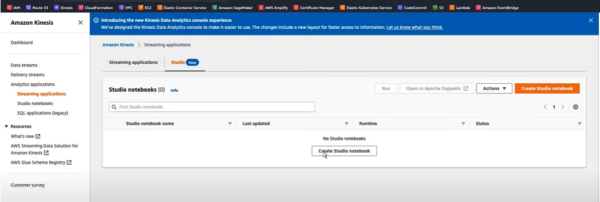
Step 13. Give the notebook a name, specify an IAM service role, and use the AWS Glue database to define the metadata for the source and destination.
Step 14. Click the Create Studio Notebook button.
Step 15. Open the studio notebook in Apache Zeppelin. Then click on Transformed Order Viewer to open the code file that contains the order viewer.
First, define a table that specifies the schema and the details about where we are reading order data from. Then specify the use of a Kinesis connector. Reading is from the order output data stream. Run code to create the table. With the table created run a real-time query to view the incoming orders where the number of products in the order is greater than one.
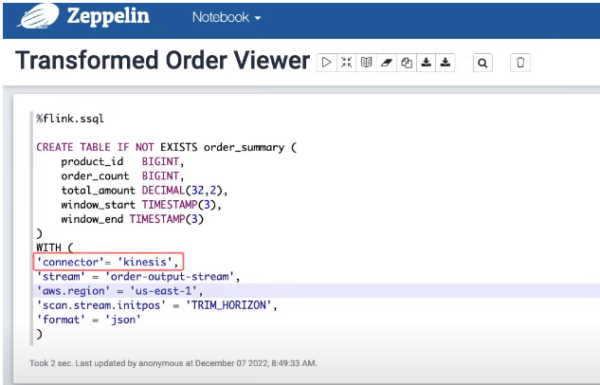
You can view the job in the Apache Flink dashboard.
Conclusion
Amazon Kinesis Data Analytics is suitable for a wide range of real-time data processing use cases, including real-time dashboards, fraud detection, recommendation engines, and IoT data analytics. It simplifies the complexities of building and managing real-time data processing pipelines, making it accessible to developers and data analysts.
Metclouds technologies can give you best AWS consulting services.


